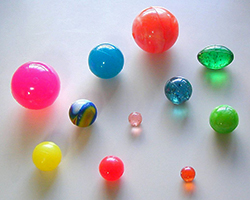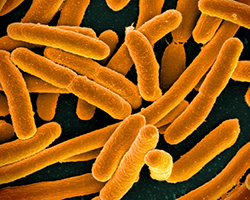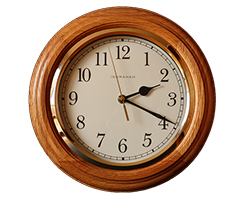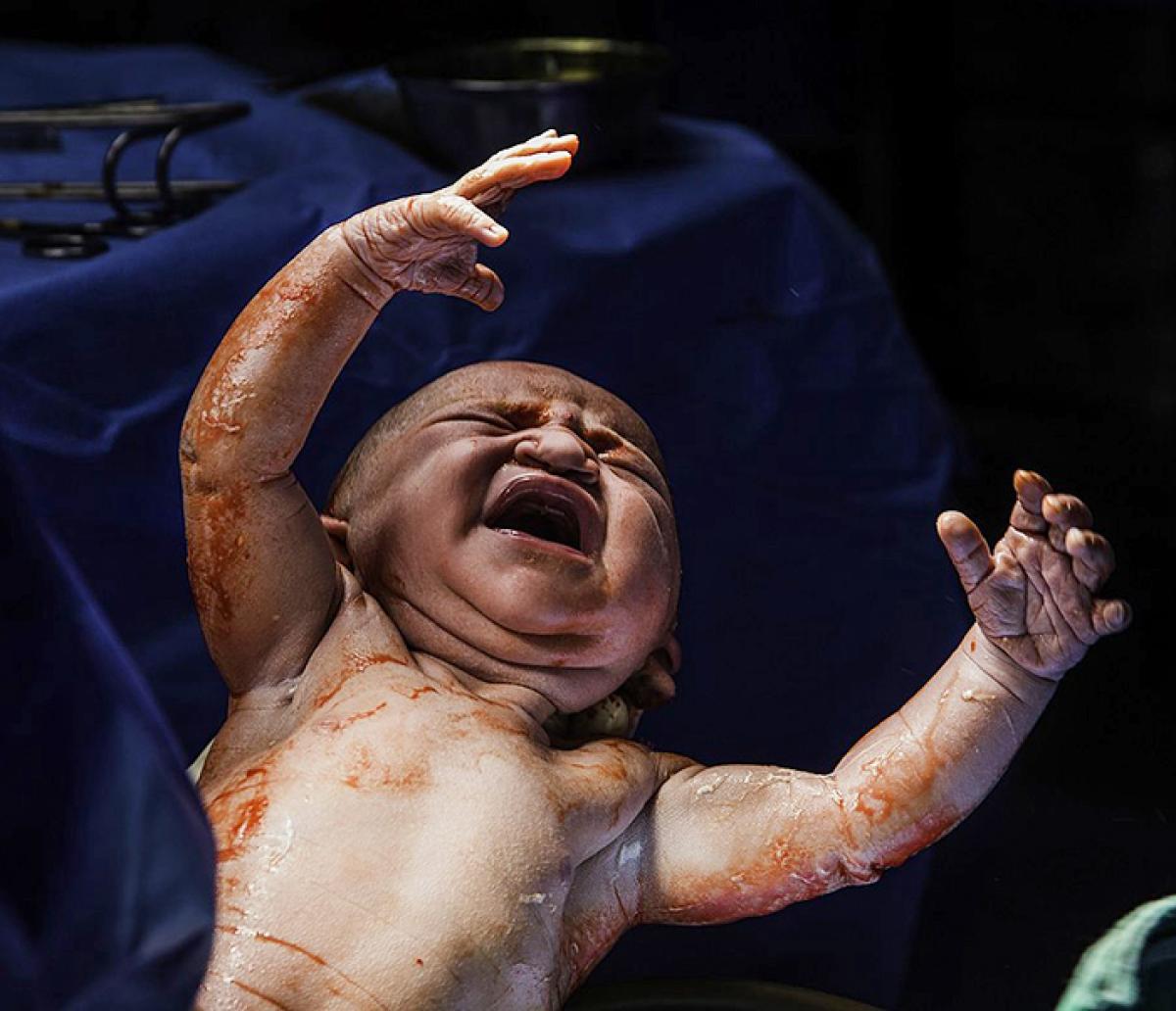
Cells Divide to Stay Alive
What's in the Story?

You are holding your favorite bouncy ball. It’s bright and colorful and you hope it will last forever. But each time you bounce the ball, it becomes a little bit damaged. Over time, your ball would become so damaged it would break. What if you could move the damage onto a different ball, allowing your favorite ball to last longer?
Bacteria deal with damage in a similar way. However, bacteria don’t transfer their damage onto a different cell. Instead, the damaged cell splits and divides its damage between two new halves. This results in two “daughter” cells with less damage than their “mother” cell had.

Bacteria cells reproduce by dividing in two, creating two new daughter cells. Image by Pradana Aumars.
When the mother splits in half, we might assume each daughter cell would inherit half the damage of the mother cell. If the cell gets more damaged during its life, future cells would inherit even more damage. Eventually, all the cells would become so damaged they couldn’t reproduce anymore. Instead, scientists found that bacteria split this damage unevenly. One “old” daughter inherits most of the damage, while the other “new” daughter inherits less damage. In this story, “old” and “new” refer to these two types of daughter cells, not to their actual ages.
In the PLOS Biology article, "Cell aging preserves cellular immortality in the presence of lethal levels of damage,” researchers studied how bacteria can split damage unevenly when dividing. This may solve the problem of too much damage building up in a cell.
Cell Damage Grows with Age
Researchers grew E. coli bacteria under normal, non-damaging conditions. First, they wanted to confirm that cells are damaged naturally as they age. Then, they wanted to find out if the cells split this damage evenly between their daughter cells. They watched the bacteria for 24 hours and recorded how quickly they reproduced.

How fast a cell can grow and divide depends on the cell’s amount of damage. Therefore, the scientists could figure out how much initial damage the mother cells had based on how fast they divided. By timing how quickly the daughter cells divided, they were also able to estimate how much damage was given to each daughter cell from the mother.
They found that one set of daughter cells grew faster and divided more quickly than the other set. This suggests that one daughter cell inherits more damage than the other. The scientists called the daughter that received more damage the “old” daughter cell and the one that received less damage the “new” daughter cell.
These results confirm that bacteria are damaged naturally with age. This damage is then divided unevenly between the daughter cells. Specifically, they found that the old daughter cell receives around 63% of its mother’s damage.
How Do “Old Daughters” Survive?
Next, the researchers wanted to figure out how the old cells deal with inheriting more damage.

The scientists calculated how much damage each cell had at “birth” based on how long it took to grow and divide. They found that the old daughters inherit the same amount of damage the mother had at birth. Because this amount is too low to kill the cell, the old daughters can still survive and reproduce.
They found that if the bacteria were too damaged too quickly, the old daughters would stop dividing and die. However, the new daughters would survive and continue to divide. Scientists refer to mother cells and their daughters and granddaughters (and so on) as cell lineages. Cell lineages that stop dividing and die off are called mortal. Lineages that survive and continue to divide are called immortal.
A Closer Look at Damage Division
Next, the researchers looked into how cells divide their damage unevenly. To do so, they needed a way to see where damage begins and ends in the cell as it divides. The researchers knew that that “damage” is made up of clumped, damaged proteins. When proteins are damaged, another type of protein called a “chaperone” finds and tries to fix them.

On a field trip, you might have had an adult called a chaperone with you in case anything goes wrong. Protein chaperones work in much the same way, keeping other proteins out of trouble. To see the damage in a cell, the researchers colored the chaperone proteins yellow. Then, they used a special microscope to see where the yellow chaperones found the damaged proteins.
They found that damage begins in the center of the cell and moves around freely. As damage increases, most of the damaged proteins move to one side of the cell. When the cell divides, that side becomes the old daughter, with more of the damage. This is how the bacteria unevenly divide damage between daughters.
Too Much Damage for Bacteria
The researchers wondered how much damage was needed to cause the cells to become mortal and stop dividing. To test this, they used light, heat, and drugs to damage the cells.
They found that high levels of damage can cause old daughter cells to become mortal and stop dividing. However, the new daughter cells exposed to the same levels of damage stay immortal and continue to divide.

The scientists predicted that the more damaged a cell becomes, the more unevenly it will split this damage between its daughter cells. By doing so, bacteria would sacrifice the old daughter and give it more damage than normal. This would allow the new daughter to receive a smaller amount of damage and survive.
Instead, they found that cells with extra damage split that damage more evenly between old and new daughters. More damage results in a more even distribution of damage. One explanation for this is that damaged protein clumps might not have enough time to gather at one side when damage occurs too quickly. Another possibility is that the old cell side becomes too full to hold more damaged proteins, so they end up somewhere else in the cell. Regardless, the new daughters still survived better than the old daughters with these high damage levels.
Could Humans Become Immortal Too?

We usually think about how aging works for humans or animals. However, it can be hard to study the specific details of aging in such large organisms. Instead, this study uses millions of tiny bacteria to study aging. This allows the researchers to gather a lot of data that can be used to create mathematical models of aging.
Human cells might not have the same methods of dealing with aging as these bacteria do. However, our cells have the same type of protein damage when we age as these bacteria do. Scientists hope that learning how bacteria prevent or deal with this damage might help solve our own issues with aging.
Additional images via Wikimedia Commons. Newborn baby by Farajiibrahim.
Bibliographic details:
- Article: Cells Divide to Stay Alive
- Author(s): Daphne Newell, Jadon Gonzales, Danielle Brister
- Publisher: Arizona State University School of Life Sciences Ask A Biologist
- Site name: ASU - Ask A Biologist
- Date published:
- Date accessed:
- Link: https://askabiologist.asu.edu/plosable/bacteria-cell-division-damage
APA Style
Daphne Newell, Jadon Gonzales, Danielle Brister. (). Cells Divide to Stay Alive. ASU - Ask A Biologist. Retrieved from https://askabiologist.asu.edu/plosable/bacteria-cell-division-damage
Chicago Manual of Style
Daphne Newell, Jadon Gonzales, Danielle Brister. "Cells Divide to Stay Alive". ASU - Ask A Biologist. . https://askabiologist.asu.edu/plosable/bacteria-cell-division-damage
Daphne Newell, Jadon Gonzales, Danielle Brister. "Cells Divide to Stay Alive". ASU - Ask A Biologist. . ASU - Ask A Biologist, Web. https://askabiologist.asu.edu/plosable/bacteria-cell-division-damage
MLA 2017 Style

Be Part of
Ask A Biologist
By volunteering, or simply sending us feedback on the site. Scientists, teachers, writers, illustrators, and translators are all important to the program. If you are interested in helping with the website we have a Volunteers page to get the process started.


